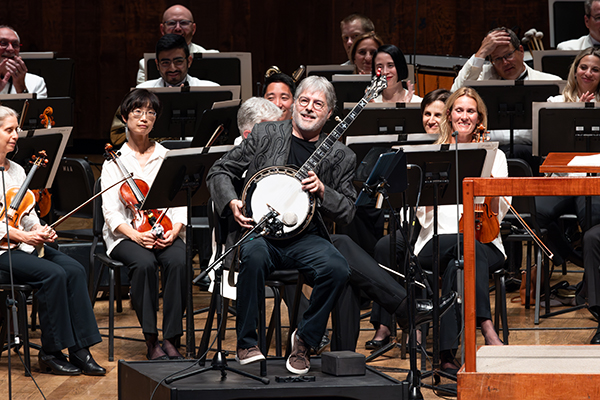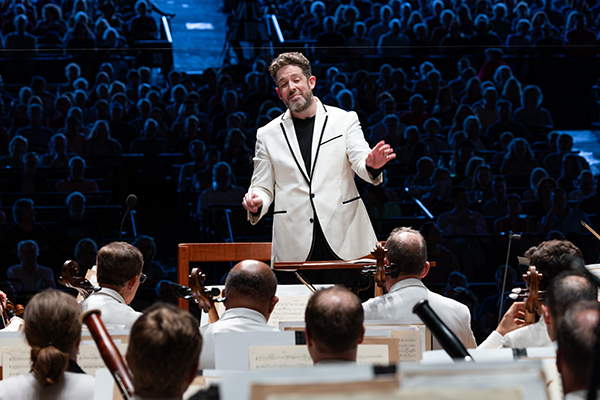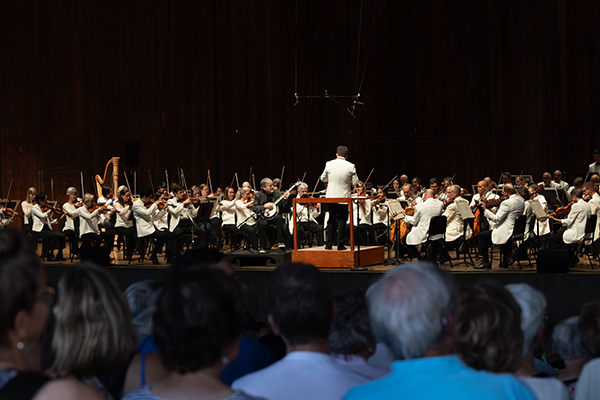by Kevin McLaughlin
This article was originally published on Cleveland.com

His reworkings succeeded so well that the piece seemed not just suitable for the banjo but actually conceived for it.
With a reputation that preceded him — his 18 Grammys acknowledge his mastery of every genre from bluegrass to classical —the audience warmed to Fleck immediately and continued to lavish their attention on his playing, eager to hear what magic might happen next.
Under the direction of Brett Mitchell, the Orchestra too seemed eager, playing at lower volumes than usual to balance the soloist. Wind soloists were excellent, especially Daniel McKelway, whose clarinet released a glorious opening skyward glissando, and Michael Sachs, who offered 1920s-style jazz from his muted trumpet. Strings generated an arrestingly warm sound, particularly in the famous orchestral tutti after the first cadenza — the passage used in commercials by a certain airline.
For a recent album, Fleck recorded two other arrangements of Gershwin’s now 100-year-old Rhapsody in addition to this standard one — one in the style of bluegrass and one in a blues idiom, which explains his occasional bending or sliding of notes, and the unaccompanied cadenzas that veered delightfully toward the southern banjo tradition. The audience applauded these delightedly on Saturday.
Fleck also showed his classical chops with clean passagework and picking which would be the envy of any guitarist. His generally straightforward approach to tempos, though, limited opportunities for rubato, resulting in a kind of relentlessness.
A standing ovation yielded an encore that was pure Fleck. After exploring a few virtuosic chords up and down the fretboard, a familiar tune began to emerge — the theme from The Beverly Hillbillies. Acknowledging the crowd’s pleasure of recognition, Fleck looked up slyly and smiled.

All three selections were sexy and fun, but the final Episode, Times Square: 1944, fairly teetered on debauchery. Special mention again goes to McKelway, who caroused on both the E-flat and B-flat clarinet. Trombonist Brian Wendel and the alto sax suggested alarming degrees of impropriety.
Samuel Barber’s Overture to The School for Scandal, an eight-minute theater piece teeming with statements both mercurial and tender, unlocked the second half. It spotlighted lovely and meticulous solo playing from the woodwinds.

Although jazz had been unleashed in America by 1931, Still’s symphony seems European: rhythms are right-angled, syncopations are aligned with downbeats, and blues sections are more calculated than carefree. But Mitchell summoned a great deal of beauty and nobility from the symphony’s events.
Photos courtesy of Kevin Libal & The Cleveland Orchestra.
Published on ClevelandClassical.com July 9, 2024.
Click here for a printable copy of this article


